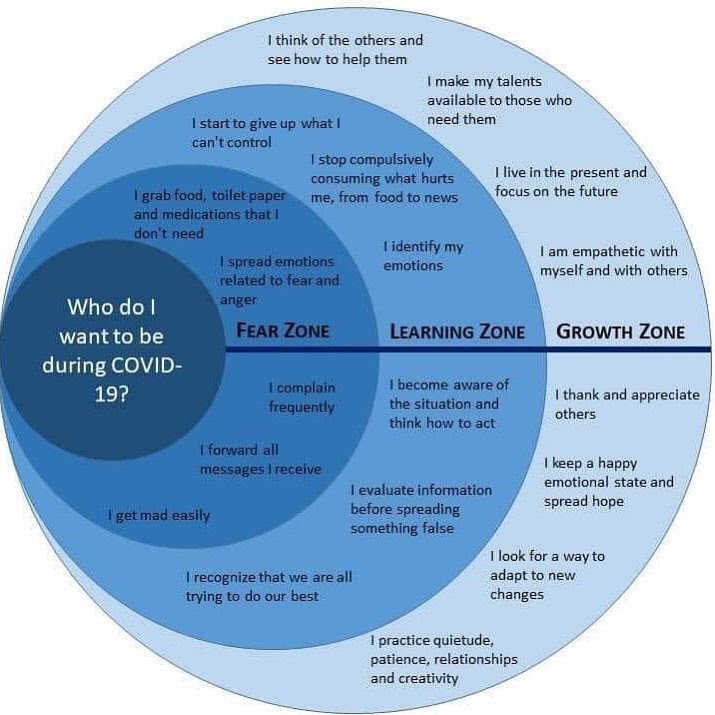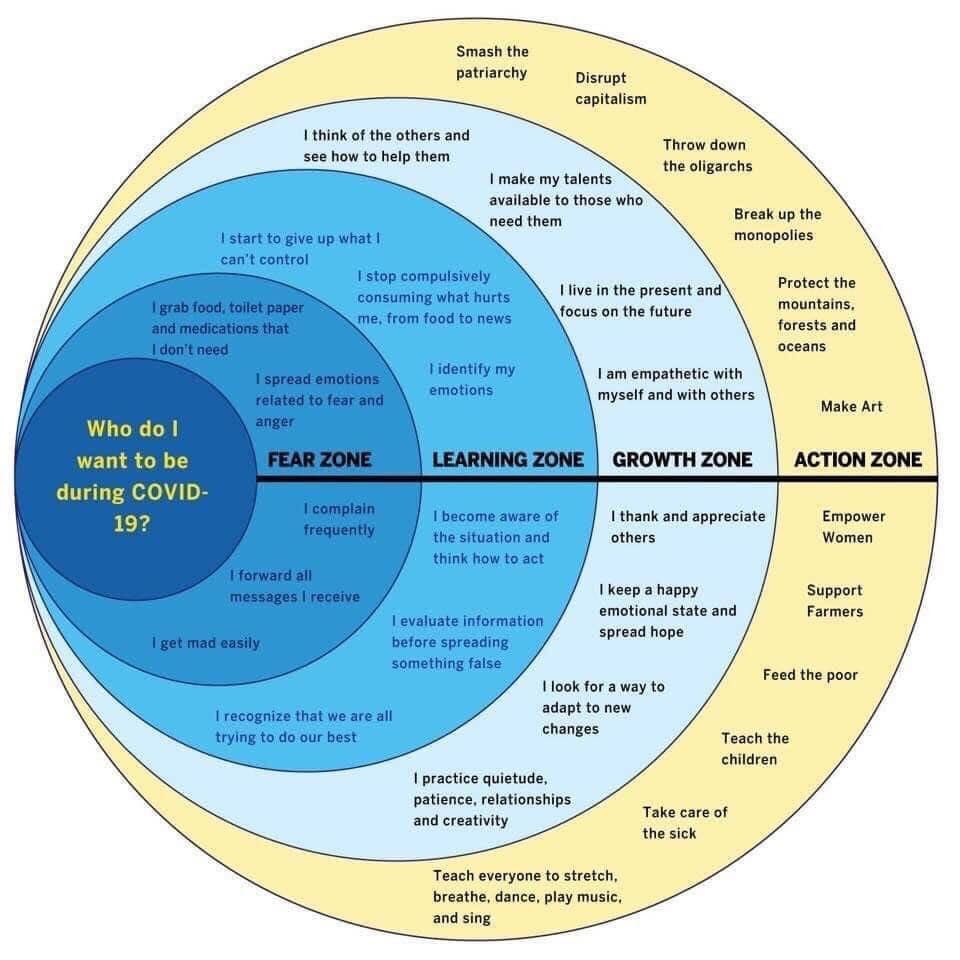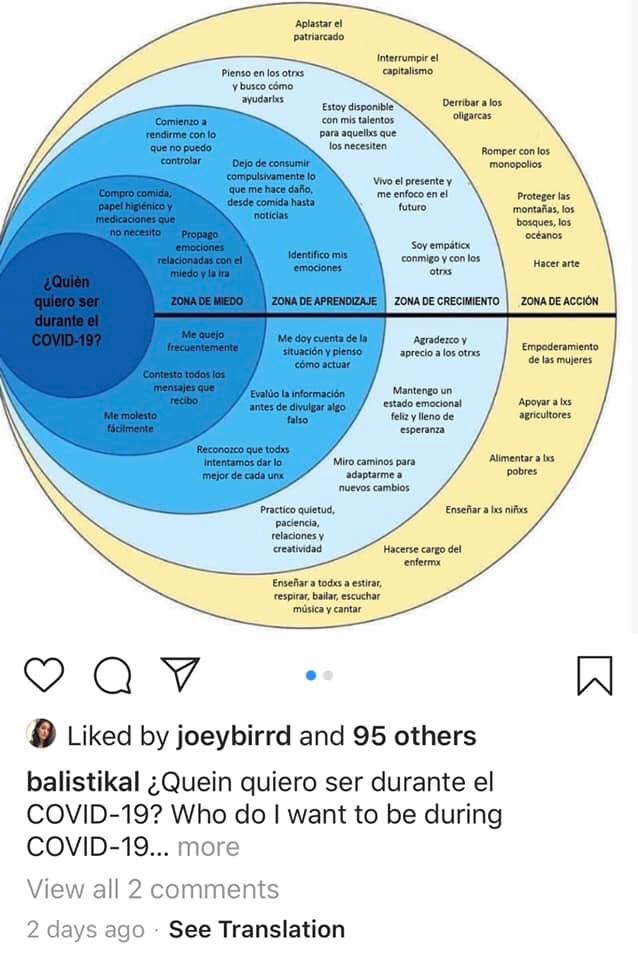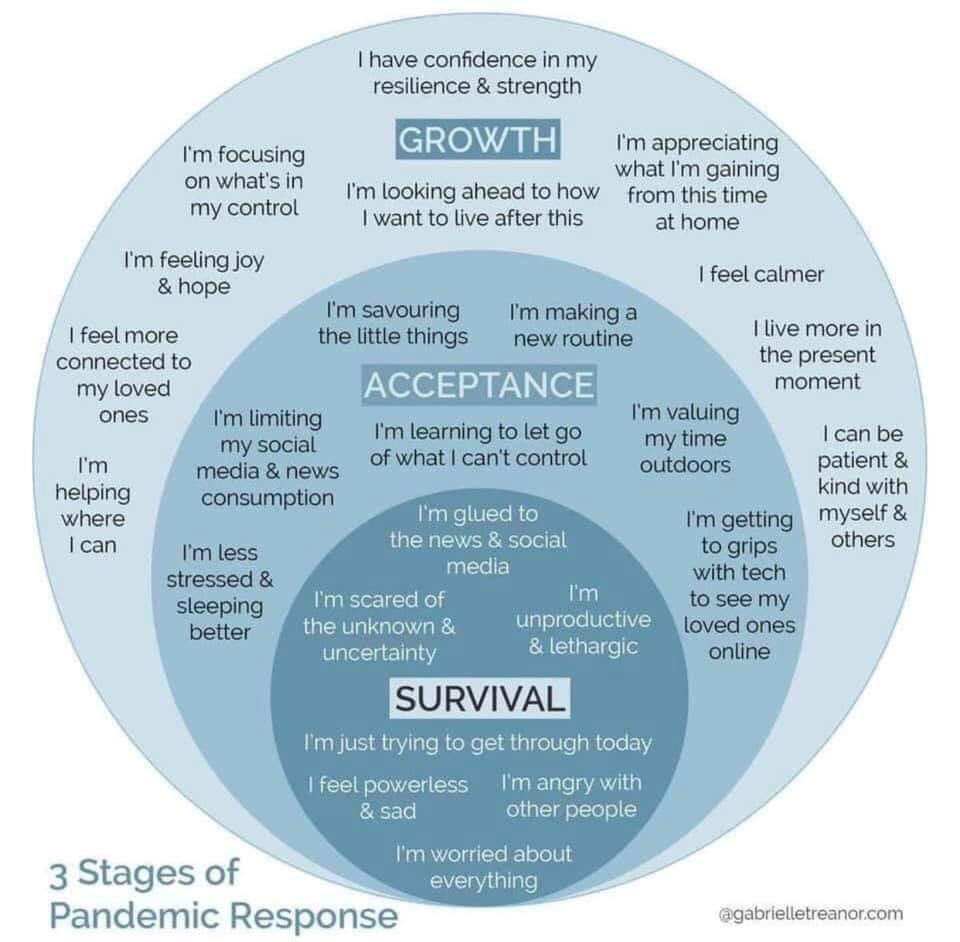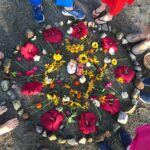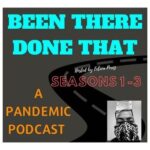In March of 2020, many suddenly found themselves with newfound questions of how to spend their time and structure their lives. What does one prioritize during a global pandemic?
A viral meme on social media tapped into this psychic wave and engaged hundreds of thousands. The meme asked us: who do we want to be during COVID-19?
How the Meme Spread
The meme above, shared across the US and around the world, was co-created by a network of behavior change communication practitioners, based in Kenya who wish to remain unnamed. When COVID-19 hit, they adapted the already widely circulated concept of moving from the comfort zone, through fear, learning, and growth zones (shown below).

The expanded framework, tying the concept to COVID-19 resonated because it encouraged viewers to ask themselves, ‘where am I’ and ‘what can I aspire to in this moment?’. It presented a diagnostic tool, facilitating a process of reflection and perhaps, growth.
The spread of the “Who do we want to be during COVID-19” meme (at least in part) began with Godfrey Ochieng Oyyekoredo, a team member of an international human rights NGO, Tostan. The Senegal-based NGO, has partnered with communities for nearly 30 years to provide empowering education and create the conditions for community-led change. Tostan’s model has allowed people to reexamine social norms, reinforce their values, and abandon some of the practices that were not aligned with those values.
When the current pandemic created conditions in which people were forced to examine their values and shift their practices, Oyyekoredo put some of his Tostan wisdom and experience to use.
“COVID has created a state of fear, for real. Even though we have strength, it’s really hard. It is critical for individuals and communities to have help navigating moments like this. That’s why I shared the meme with my global network of colleagues, originating from our Kenyan Behavior Change Communication platform, which has been pivotal in stopping the spread of HIV/AIDS.
The description of the zones in the meme reminds me of the Tostan model. It is strength based. It believes people have the ability and capacity to navigate challenges. Tostan helps people realize they have the strength [and] the solutions they need to build the capacity to aspire. I’ve personally built the capacity to aspire. That’s why I was able to move out from all of those other zones, from fear to growth, where I was able to inform others and reach out to my networks.”
Godfrey Ochieng Oyyekoredo
Over 24 hours, the meme spread to millions, with several adaptations (pictured below) being created and shared, adapted to speak to different communities and frameworks. How did this happen?
Godfrey shared this meme with colleagues at Tostan, who included Suzanne Bowles, who then shared it with Danielle Coates-Connor. From there, it spread across the US, thanks—in part—to a single share by Danielle in the Evolutionary Leadership community. Eroc Arroyo-Montano, a Boston-based performer and community organizer widely known as being part of the political hip-hop duo Foundation Movement, shared the meme to his instagram followers, who included David Kong. Kong is currently a big deal. He’s a scientist and artist getting a lot of visibility for his work to keep communities informed of the facts behind the spread of COVID-19, especially important in a sea of misinformation. Kong has been collaborating with Jaylen Brown, a member of the professional basketball team, the Boston Celtics. Brown re-shared the meme with his 1.2 million Instagram followers. That share set the meme ablaze. We identified the west coast spread via Taj James of Movement Strategy Center.
Adaptations of “Who Do I Want To Be During COVID-19?”:
